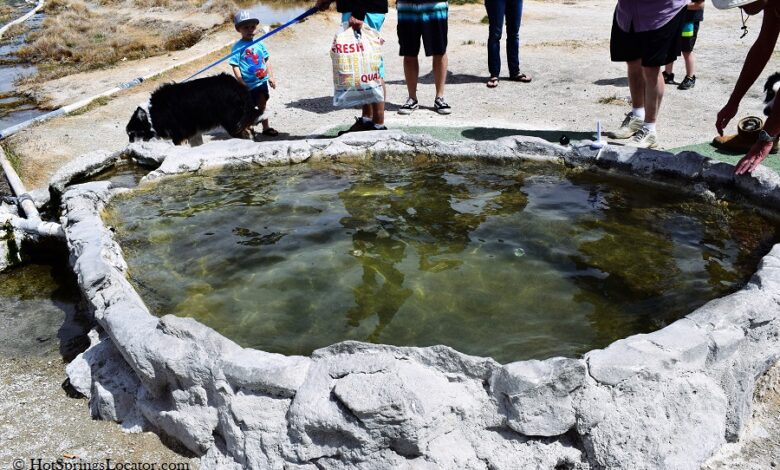Discover Hilltop Hot Springs The Ultimate Guide to California’s Hidden Geothermal Gem

If you’re searching for a peaceful escape into nature with stunning mountain views, warm mineral waters, and a relaxing atmosphere, Hilltop Hot Springs should be at the top of your list. Nestled in California’s Eastern Sierra near Mammoth Lakes, Hilltop Hot Springs is one of the most picturesque and accessible geothermal pools in the region.
In this comprehensive guide, we’ll explore everything you need to know about Hilltop Hot Springs, including:
- What makes Hilltop Hot Springs special
- How to get there
- The history of the springs
- The best times to visit
- What to bring for your trip
- Rules and etiquette
- Other nearby attractions
- FAQs
By the end of this article, you’ll be fully prepared for your next outdoor adventure to Hilltop Hot Springs.
What Are Hilltop Hot Springs?
Hilltop Hot Springs, sometimes called Pulkey’s Pool, is a naturally heated hot spring located in the high desert plains near Mammoth Lakes, California. Unlike commercial hot spring resorts, Hilltop is a primitive soak—free to the public, maintained by visitors, and surrounded by breathtaking panoramic views of the Sierra Nevada Mountains.
The main soaking tub is a man-made pool fed by natural geothermal water, piped from the source a few feet away. The water temperature averages 100°F to 105°F (37°C to 40°C), but visitors can adjust the flow to make it hotter or cooler. The pool itself is large enough to accommodate 4-6 people comfortably.
Why Visit Hilltop Hot Springs?
There are countless reasons why Hilltop Hot Springs attracts nature lovers, road trippers, and adventurers from all over the world. Here are a few key highlights:
Unbeatable Views
Few hot springs offer the sweeping mountain vistas that Hilltop provides. You can soak while gazing at:
- The Sierra Nevada Mountains
- Mount Morrison and Laurel Mountain
- The White Mountains in the distance
- Open meadows and wildflowers in spring
At sunset or sunrise, the reflections on the water create a magical experience.
Natural Healing
The mineral-rich waters of Hilltop Hot Springs are believed to offer health benefits such as:
- Muscle relaxation
- Stress relief
- Improved blood circulation
- Joint pain relief
Even if you don’t believe in the healing properties of mineral water, there’s no denying that soaking in warm water under the open sky is good for the soul.
Accessibility
Hilltop is one of the most easily accessible hot springs in California’s Eastern Sierra. It’s just a 10-minute drive from Highway 395 and only a short 5-10 minute walk from the parking area.
Unlike remote hot springs that require long hikes or 4×4 vehicles, Hilltop is perfect for travelers of all fitness levels.
Free Admission
Unlike spa resorts or pay-to-soak facilities, Hilltop Hot Springs is completely free. It’s open 24/7, and visitors often say the best times are early in the morning or late at night when the stars fill the sky.
The History of Hilltop Hot Springs
Native American Use
Long before tourists discovered the area, the Paiute and Shoshone tribes used the natural hot springs of the Eastern Sierra for bathing, healing, and ceremonial purposes. The geothermal activity in the region has been a sacred and cultural resource for centuries.
Ranching and Settler Era
In the early 1900s, local ranchers began modifying hot springs in the area to create small bathing pools. The tub at Hilltop Hot Springs was improved by volunteers and hot spring enthusiasts over the years, using concrete and stones to shape a pool that’s still in use today.
How to Get to Hilltop Hot Springs
Location
- GPS Coordinates: 37.6601° N, 118.8204° W
- Nearest City: Mammoth Lakes, California
Driving Directions
- From Highway 395, take the Benton Crossing Road exit (look for the green church as a landmark).
- Drive about 2.5 miles east on Benton Crossing Road.
- Turn left onto Whitmore Tubs Road, a well-graded dirt road.
- Continue for about 0.5 miles until you reach the Hilltop Hot Springs parking area.
There’s a small parking lot with room for 5-10 vehicles. The walk from the parking area to the springs is about 0.25 miles along a flat dirt path.
When Is the Best Time to Visit Hilltop Hot Springs?
Spring (March to May)
- Pros: Mild temperatures, wildflowers, and snow-capped mountain views
- Cons: Can be busy during spring break and holidays
Summer (June to August)
- Pros: Warm weather, great for camping
- Cons: The hot water can feel less refreshing in high temperatures; increased visitor traffic
Fall (September to November)
- Pros: Cool mornings and evenings, fewer crowds
- Cons: Weather can be unpredictable as winter approaches
Winter (December to February)
- Pros: Soaking in hot water surrounded by snow is a magical experience
- Cons: Roads may be icy or closed due to snow; check conditions before visiting
What Should You Bring to Hilltop Hot Springs?
Here’s a checklist for your visit:
- Swimsuit (optional—some visitors soak nude, as it is clothing-optional)
- Towel
- Sandals or water shoes (for the walk to the pool)
- Headlamp or flashlight (if visiting at night)
- Trash bag (pack out all trash)
- Water bottle (stay hydrated)
- Camera (to capture the scenery)
- Respectful attitude (this is a shared space)
Rules and Etiquette at Hilltop Hot Springs
To keep Hilltop Hot Springs beautiful and available for future visitors, it’s important to follow some simple rules:
Leave No Trace
- Pack out everything you bring in—including trash, towels, and bottles.
- Do not leave soap or shampoo in the water. They can pollute the natural spring.
Clothing-Optional Policy
Hilltop is clothing-optional, so you might encounter nudity. This is common at many natural hot springs. If you prefer not to see nude bathers, consider visiting early in the morning when it’s less crowded.
Keep It Peaceful
- No loud music
- No large parties
- Respect others’ space
Be Respectful of Wildlife
You’re in a wild environment. Watch for deer, birds, and small animals. Do not feed or disturb wildlife.
5. Don’t Hog the Tub
Hilltop is a small spring. If others are waiting, consider limiting your soak to about 30 minutes, especially during peak times.




